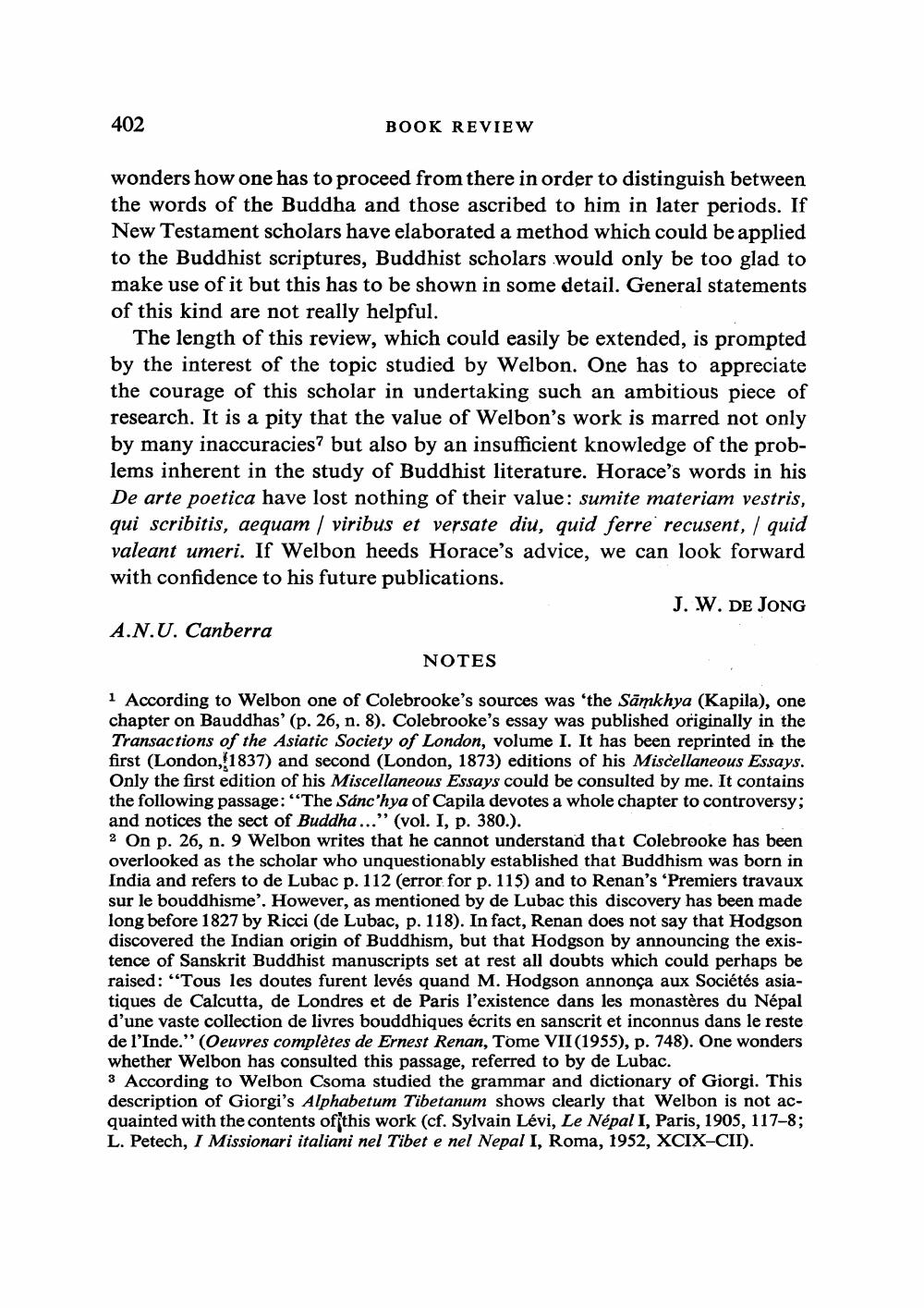Book Title: Book Review Of Buddhist Nirvana And Its Western Interpreters Author(s): Publisher: View full book textPage 7
________________ 402 BOOK REVIEW wonders how one has to proceed from there in order to distinguish between the words of the Buddha and those ascribed to him in later periods. If New Testament scholars have elaborated a method which could be applied to the Buddhist scriptures, Buddhist scholars would only be too glad to make use of it but this has to be shown in some detail. General statements of this kind are not really helpful. The length of this review, which could easily be extended, is prompted by the interest of the topic studied by Welbon. One has to appreciate the courage of this scholar in undertaking such an ambitious piece of research. It is a pity that the value of Welbon's work is marred not only by many inaccuracies? but also by an insufficient knowledge of the problems inherent in the study of Buddhist literature. Horace's words in his De arte poetica have lost nothing of their value: sumite materiam vestris, qui scribitis, aequam / viribus et versate diu, quid ferre' recusent, , quid valeant umeri. If Welbon heeds Horace's advice, we can look forward with confidence to his future publications. J. W. DE JONG A.N.U. Canberra NOTES 1 According to Welbon one of Colebrooke's sources was 'the Samkhya (Kapila), one chapter on Bauddhas' (p. 26, n. 8). Colebrooke's essay was published originally in the Transactions of the Asiatic Society of London, volume I. It has been reprinted in the first (London, 1837) and second (London, 1873) editions of his Miscellaneous Essays. Only the first edition of his Miscellaneous Essays could be consulted by me. It contains the following passage: "The Sanc'hya of Capila devotes a whole chapter to controversy; and notices the sect of Buddha..." (vol. I, p. 380.). 2 On p. 26, n. 9 Welbon writes that he cannot understand that Colebrooke has been overlooked as the scholar who unquestionably established that Buddhism was born in India and refers to de Lubac p. 112 (error: for p. 115) and to Renan's 'Premiers travaux sur le bouddhisme'. However, as mentioned by de Lubac this discovery has been made long before 1827 by Ricci (de Lubac, p. 118). In fact, Renan does not say that Hodgson discovered the Indian origin of Buddhism, but that Hodgson by announcing the existence of Sanskrit Buddhist manuscripts set at rest all doubts which could perhaps be raised: "Tous les doutes furent leves quand M. Hodgson annonca aux Societes asiatiques de Calcutta, de Londres et de Paris l'existence dans les monasteres du Nepal d'une vaste collection de livres bouddhiques ecrits en sanscrit et inconnus dans le reste de l'Inde." (Oeuvres completes de Ernest Renan, Tome VII (1955), p. 748). One wonders whether Welbon has consulted this passage, referred to by de Lubac. 3 According to Welbon Csoma studied the grammar and dictionary of Giorgi. This description of Giorgi's Alphabetum Tibetanum shows clearly that Welbon is not acquainted with the contents of this work (cf. Sylvain Levi, Le Nepal I, Paris, 1905, 117-8; L. Petech, I Missionari italiani nel Tibet e nel Nepal I, Roma, 1952, XCIX-CII).Page Navigation
1 ... 5 6 7 8
